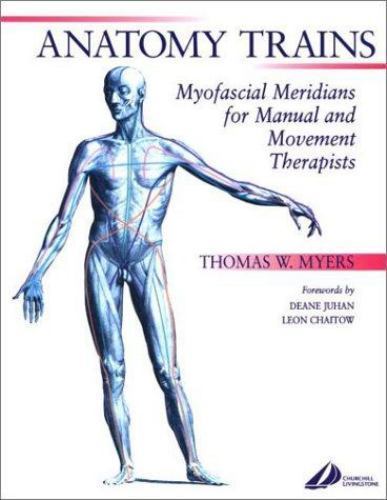Imagen 1 de 1

Foto genérica

Imagen 1 de 1

Foto genérica

Anatomy Trains : Myofascial Meridians for Manual and Movement Therapists by Thomas W. Myers (2001, Trade Paperback)

AlibrisBooks (455175)
98,5% de votos positivos
Precio:
USD128,48
Aproximadamente112,53 EUR
+ USD24,66 de envío
Devoluciones:
30 días para devoluciones. El comprador paga el envío de la devolución..
Estado:
New Trade paperback
Oops! Looks like we're having trouble connecting to our server.
Refresh your browser window to try again.
Acerca de este artículo
Product Identifiers
PublisherElsevier-Health Sciences Division
ISBN-100443063516
ISBN-139780443063510
eBay Product ID (ePID)1927231
Product Key Features
Number of Pages300 Pages
LanguageEnglish
Publication NameAnatomy Trains : Myofascial Meridians for Manual and Movement Therapists
SubjectAlternative & Complementary Medicine, Physical Medicine & Rehabilitation, Massage & Reflexotherapy
Publication Year2001
TypeTextbook
Subject AreaHealth & Fitness, Medical
AuthorThomas W. Myers
FormatTrade Paperback
Dimensions
Item Weight26.1 Oz
Item Length10.6 in
Item Width8.7 in
Additional Product Features
Intended AudienceScholarly & Professional
LCCN2001-047303
Dewey Edition21
TitleLeadingThe
IllustratedYes
Dewey Decimal612.7/5
Table Of ContentIntroduction: Laying the railbed 1. The world according to fascia 2. The rules of the game 3. The superficial back line 4. The superficial front line 5. The lateral line 6. The spiral line 7. The arm lines 8. The functional lines 9. The deep front line 10. Anatomy trains in motion 11. Structural Analysis Appendix 1. A note on the meridians of latitude: the work of Dr Louis Schultz Appendix 2. Principles of treatment Glossary Bibliography
SynopsisAn accessible and comprehensive approach to the anatomy and function of the fascial system in the body combined with a holistic overview of myofascial therapy. Many different therapists now use myofascial techniques to influence postural change and pain relief. This book demonstrates exactly how the muscles connect within the connect tissue to affect posture, compensatory strain, and pain patterns. The aim is to present scientifically sound and often complicated material in a way which can be easily learned, understood, and applied by those who do not necessarily have a scientific background. ANATOMY TRAINS is written and presented in a style that allows this new information on the myofascial system to be easily absorbed by a wide range of readers: from the student, athlete, or client to the most experienced therapist., An accessible and comprehensive approach to the anatomy and function of the fascial system in the body combined with a holitsic overview of myofascial therapy. Many different therapists now use myofascial techniques to influence postural change and pain relief. This book demonstrates exactly how the muscles connect within the connect tissue to affect posture, compensatory strain and pain patterns. The aim is to present scientifically sound and often complicated material in a way which can be easily learned, understood, and applied by those who do not necessarily have a scientific background. Anatomy Trains is written and presented in a style that allows this new information on the myofascial system to be easily absorbed by a wide range of readers: from the student, athlete, or client to the most experienced therapist. Includes full-colour illustrations of 11 myofascial meridians and the rules for discovering other meridians Uses numerous two-colour charts and drawings to detail the muscular and fascial structures involved in the meridians Presents information on assessment of structural and movement patterns and gives related applications to manual therapy and movement education Provides a selection of techniques from the library of structural integration Includes an introduction to the fascial system as a whole, with new points-of-view and new research findings on the fascial system's responses Offers a fun approach to learning essential structural anatomy, comparing the connective tissue system to a railway network
LC Classification NumberQM563.M98 2001












